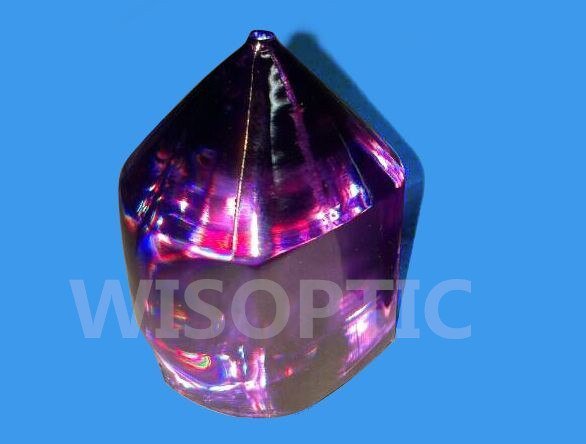Key technology of lasers: the gain medium
Since the birth of the first ruby laser, researchers have studied various types of gain medium, but there are only a few gain media could be used in the all-solid-state laser. At present, the most commonly used gain media are Nd:YAG, Nd:YVO4, Nd:GdVO4, among which Nd:YAG, Nd:YVO4 (wisoptic.com) are the most frequently used. The principle of laser generation of the three gain media is roughly the same, their main difference lies in the physical and chemical properties of the material. Table 1 lists a comparison of the three gain media.
For Nd:YAG crystal, the emission cross section of the crystal itself is small, but it has relatively high fluorescence lifetime and thermal conductivity, so the requirements for the heat dissipation technology of the laser system are not high, and it is suitable for high-power lasers and pulsed lasers. Secondly, the YAG matrix has high mechanical strength, good thermal conductivity, and high crystal transmittance within the laser wavelength range. Large-scale and high-quality crystals can be grown by Cz method. Therefore, Nd:YAG laser has the advantages of high efficiency, reliable performance, easy miniaturization, good beam quality and high power stability, making it the first choice of gain medium for LD-pumped all-solid-state lasers.
For Nd:YVO4, it has the advantages of large emission cross section, high absorption bandwidth and polarized light output. However, Nd:YVO4 also has many disadvantages: First, due to the limitation of the physical properties of the crystal itself, high-quality large-sized crystals cannot be obtained, and its mechanical properties and uniformity are very poor, so only small-sized crystals can be produced. The small size restricts the application of Nd:YVO4 crystals in lasers; secondly, due to the low thermal conductivity and obvious thermal effects, the requirements of lasers on heat treatment capabilities have become more stringent, and the development of experimental equipment has been increased to a certain extent. Therefore, Nd:YVO4 crystals are more suitable for thin-film lasers and low-power lasers.
GdVO4 is a another host crystal with the same structure as YVO4. Nd:GdVO4 and Nd:YVO4 have basically similar laser properties. Their FWHM is slightly wider than that of Nd:YAG, and its absorption cross section is twice that of Nd:YVO4 and more than seven times that of Nd:YAG. The stimulated emission cross section of Nd:GdVO4 is the largest among the three crystals and its thermal conductivity is also very good. This crystal can achieve high concentration doping and can easily grow with high quality and large size and uniform optical properties. These advantages may make Nd:GdVO4 the preferred gain medium for all-solid-state lasers in the future. Especially in the quasi-three-level system, the large thermal conductivity makes the temperature gradient inside the crystal smaller, the thermal lens is not obvious, and the absolute temperature of the crystal is low, so the reabsorption loss of the lower-level particles in the crystal is further reduced.
Post time: Apr-26-2022

